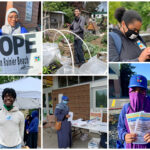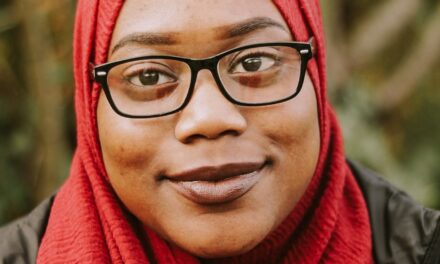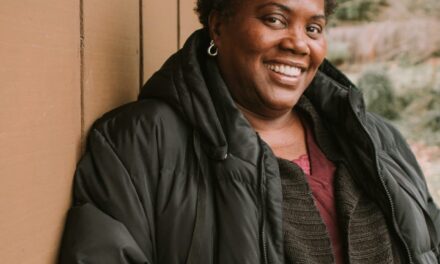Holding Space: Faduma Ahmed Fido

“In my experience living and growing up in Rainier Valley, everything was always so close: your friends, family, school, grocery store, mosque, community center…etc.
Everything was walkable; you could hop on the 7, 9, or 60 bus line; everything was reachable; everything was close and familiar.
That’s why I enjoy living and working in the Rainier Valley/South End. It’s a place you want to give back to. It has given me so much. I have lived here for almost three-quarters of my life. It’s where I graduated high school and established life long goals. It has been a place that kept my family together.
Every time I’m in or around the New Holly Family-Gathering Hall, I feel the strongest presence of the community. It is a place that has adopted and comforted so many families over decades and generations. A place that still serves the community. A place where people have celebrated birthdays, funerals, weddings — almost any sort of occasion that brings community and families together. 
It’s hard to imagine a Rainier Valley without community-based organizations and nonprofits; they represent the communities living or working in the Rainier Valley. They provide more than employment, but also deliver essential resources to the community.
Whenever I want to do an event to gather the communities of South Seattle, especially in the Rainier Valley, the community is so giving
Whenever I want to do an event to gather the communities of South Seattle, especially in the Rainier Valley, the community is so giving. Whether I’m looking for space, talent, or equipment for an event, I always find someone local who’s willing to be flexible — even offering a discount.
It’s refreshing that I can utilize the same workforce and resources and assets present in the Rainier Valley to be able to serve the Rainier Valley.”
Unfortunately, with hypergentrification and rising housing costs, I think that [even though] community organizations & nonprofits try very hard to combat gentrification and displacement in Southeast Seattle, securing funding is challenging due to rising building costs and increased land prices.
The Rainier Valley and Southeast Seattle without community-based organizations would be less diverse, less of what it is now.
Diversity benefits all of us and allows us to humble ourselves. You can always sympathize, but it’s beyond sympathy when you live around each other, play together, work together, and frequent each other’s businesses. This connectedness is why community members are excited to gather around each other and to remain in the Rainier Valley. It’s also comforting to know that you can always turn to neighbors, no matter where they’re from or who they are, and know there’s a sense of community here.
You see displacement way before you feel it.
You see displacement way before you feel it.
You see changes in your living spaces. New buildings getting taller.
I think the one time I felt the real pressure of moving out of the #Soufend was right before the pandemic in 2019. The neighborhood was slowly becoming unfamiliar. People [were] moving, and you never quite saw them moving. You just observed that they were missing.
I think the tides shifted long ago, and now it’s not so much about displacement and economic resiliency, it’s more about how much information you can put in the hands of the community, enabling them to make better decisions every day.
Communities must be able to have resources and services [that are] visible and easy to understand. I hope to shift some of our tactics to help community members access affordable services, increase [their] financial literacy, understand the banking system, and attain information about resources in surrounding communities.
Knowledge and access are power.








